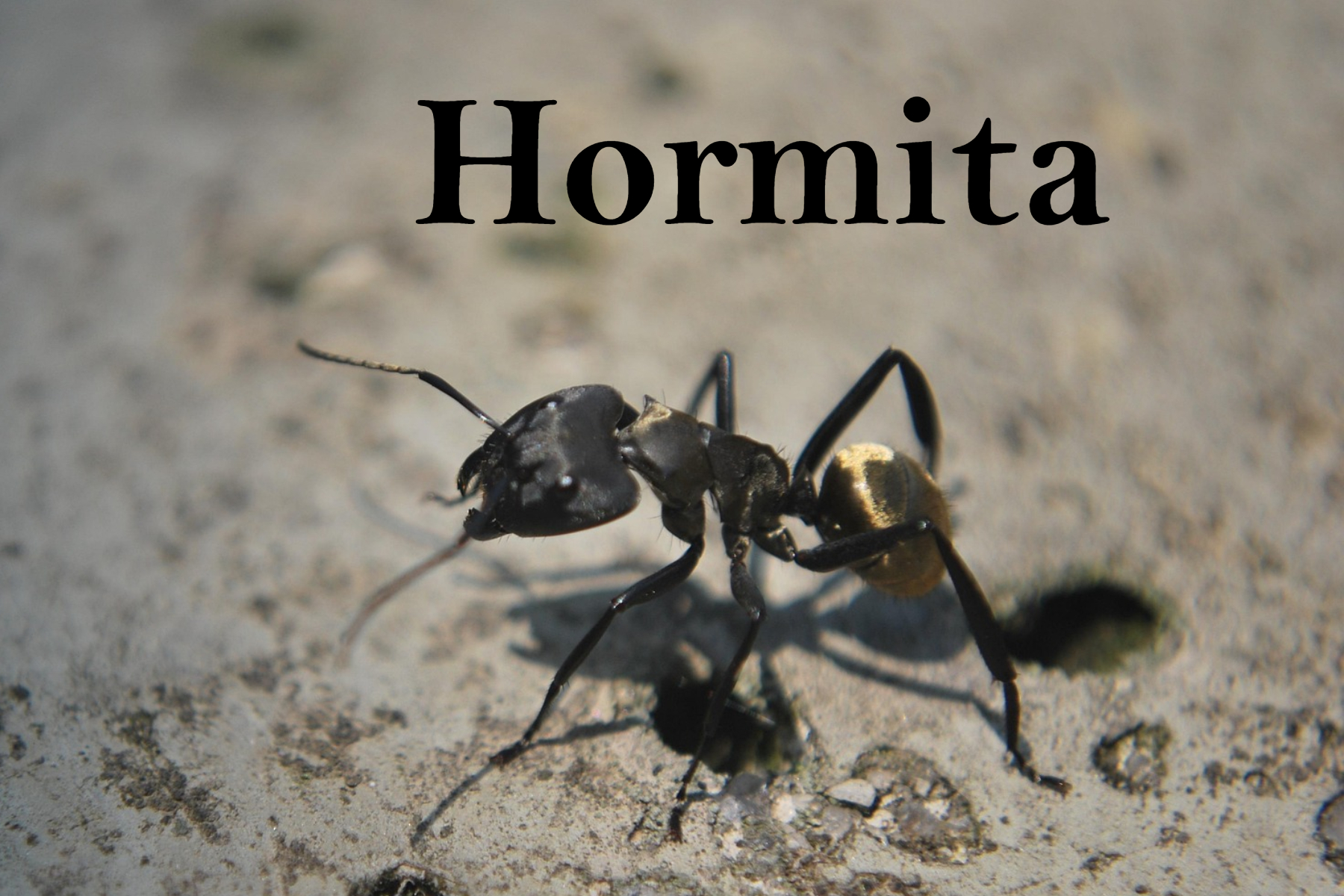Hormita: Meaning, Origins, Benefits, and Modern Applications
Introduction
In recent years, the word Hormita has begun gaining attention across wellness, cultural, and linguistic communities worldwide. While the term might sound mysterious, it holds deep meanings depending on context — from being a traditional or herbal remedy in some cultures to a symbolic or linguistic term representing resilience, growth, or balance.
In this article, we’ll explore what Hormita truly means, where it originates from, how it’s being used in modern contexts, and why it has captured the interest of both researchers and holistic practitioners. Whether you’re a curious learner, a linguist, or someone exploring wellness philosophies, this guide offers a comprehensive understanding of Hormita and its broader significance.
What Is Hormita?
The word Hormita doesn’t have a single fixed meaning — its interpretation varies across cultures and fields. Linguistically, it appears in Spanish, Latin-rooted languages, and regional dialects, where it can be tied to the word “horma” (meaning “mold” or “form”). Symbolically, however, Hormita has evolved into something more meaningful — representing balance, adaptation, and natural harmony.
Common Interpretations of Hormita
- Traditional Wellness Concept:
In some holistic traditions, Hormita is thought to represent “natural body balance” — a state of inner equilibrium achieved through diet, mindfulness, and natural healing. - Linguistic Origin:
Derived from horma, it can mean “that which takes shape or molds life.” - Metaphorical Use:
Many use Hormita to symbolize personal growth — the idea that challenges “mold” us into stronger versions of ourselves.
This multidimensional meaning gives Hormita both scientific and philosophical value, making it a fascinating topic for researchers and wellness enthusiasts alike.
The Origins and Etymology of Hormita
The origins of Hormita trace back to Latin and Iberian linguistic roots, where horma meant form, structure, or template. The suffix -ita typically indicates a diminutive or affectionate variation, making Hormita roughly translate to “little form” or “gentle shaping.”
Historical Usage
- In old Spanish literature, Hormita was sometimes used to describe gentle transformation — a poetic metaphor for personal or physical change.
- In wellness contexts, some traditional healers in Mediterranean and Latin American regions have used Hormita to describe natural methods of restoring health and balance, often involving herbs, oils, or body alignment.
Over time, the word expanded beyond language and folklore, symbolizing a process of mindful transformation, whether in health, creativity, or emotional growth.
Hormita in Modern Wellness and Lifestyle
Today, Hormita has found a place in various modern wellness practices that emphasize natural healing, personal growth, and self-awareness.
1. Holistic Health
Practitioners use Hormita-based philosophies to describe a lifestyle that promotes equilibrium between mind, body, and environment.
Key elements include:
- Balanced nutrition using organic or plant-based foods.
- Incorporation of meditation or mindfulness techniques.
- Regular physical activity like yoga or tai chi.
- Use of herbal supplements believed to support hormonal and emotional balance.
2. Emotional and Mental Well-being
Hormita also serves as a metaphor for emotional resilience. It’s about learning how to adapt gracefully under pressure, maintaining inner peace even when circumstances change.
In psychology-inspired self-help practices, Hormita is used as a framework for:
- Emotional self-regulation.
- Positive habit formation.
- Mindful transformation of behavior.
3. Cultural Symbolism
In cultural contexts, Hormita often symbolizes the idea that every challenge shapes us — that adversity “molds” character. This aligns with the philosophical principle that growth comes through transformation, just as clay must be molded before it becomes art.
Scientific View: Can Hormita Be Explained Biologically?
Interestingly, modern science finds parallels to the concept of Hormita in hormesis — a biological phenomenon where small doses of stress (like exercise or fasting) trigger adaptive benefits in the body.
Hormesis vs. Hormita
While not the same word, their conceptual overlap is remarkable:
- Hormesis refers to a biological process where mild stress strengthens an organism.
- Hormita, in wellness philosophy, represents growth and balance through mindful challenge.
Both suggest that small, managed stresses lead to greater strength and harmony.
Examples include:
- Exercise: Micro-tears in muscles heal stronger.
- Fasting: Mild caloric restriction improves metabolism.
- Cold exposure: Stimulates immune and circulatory systems.
Thus, Hormita, as a philosophical term, mirrors scientific ideas about adaptive growth and resilience.
Practical Applications of Hormita Principles
If you’re looking to incorporate the “Hormita mindset” into your daily life, here are some practical ways to do so:
1. Balance Your Routine
Create a daily rhythm that blends productivity with recovery.
- Work with focus, but also rest consciously.
- Alternate between mental and physical tasks.
- Practice mindful breaks throughout the day.
2. Embrace Gentle Stressors
Mild challenges build resilience — physical, emotional, or intellectual.
- Try short cold showers.
- Practice intermittent fasting.
- Challenge yourself with creative or learning tasks.
3. Maintain Emotional Flexibility
When stress arises, view it as an opportunity to “reshape” your reactions.
- Reframe problems as lessons.
- Use journaling to observe emotional patterns.
- Engage in meditation or breathing exercises.
4. Integrate Nature and Stillness
Hormita emphasizes harmony with natural cycles — sunrise, sunset, rest, and nourishment.
- Spend 10–20 minutes daily outdoors.
- Reduce digital noise to reconnect with inner calm.
5. Continuous Self-Reflection
Growth is a process. Reflect weekly on what molded you positively and what didn’t.
- Keep a “Hormita Journal.”
- Track energy, mood, and goals.
- Adjust habits that throw you off balance.
Cultural and Global Influence of Hormita
As global interest in mindfulness, plant medicine, and slow living grows, Hormita’s core philosophy resonates with diverse audiences.
1. In Latin America
Wellness retreats and holistic coaches have begun adopting Hormita as a theme for programs promoting self-reinvention and emotional balance.
2. In Europe
Cultural workshops interpret Hormita as “the art of being gently transformed,” connecting it with creative therapy, pottery, and yoga.
3. In North America and Asia
Influencers and authors are using the term to represent a modern balance lifestyle — one that encourages mindful living amid digital chaos.
Benefits of Practicing Hormita-Based Living
Adopting the Hormita philosophy offers several tangible and emotional benefits:
Physical Benefits
- Improved immunity through mild stress exposure.
- Better metabolism via fasting or nature-based routines.
- Enhanced hormonal and energy balance.
Mental Benefits
- Greater focus and clarity.
- Reduced anxiety through mindfulness.
- Strengthened resilience during life transitions.
Spiritual and Emotional Benefits
- Deeper connection with oneself.
- Acceptance of imperfection and change.
- Sense of harmony between life’s chaos and calm.
How Hormita Differs from Other Wellness Philosophies
| Aspect | Hormita Philosophy | Traditional Wellness Concepts |
| Focus | Balance through gentle transformation | Avoidance of stress |
| Method | Uses small challenges to build resilience | Focus on comfort and stability |
| Goal | Harmony between inner and outer worlds | Emotional peace and physical relaxation |
| Approach | Adaptive and self-aware | Preventive and static |
Hormita isn’t about escaping discomfort — it’s about learning to flow with it constructively.
Common Misconceptions About Hormita
- “It’s just another fad.”
While it’s trending online, the roots of Hormita lie in timeless wisdom about balance and transformation. - “It’s a product or supplement.”
Hormita isn’t a specific pill or herb — it’s a philosophy or lifestyle approach. - “It’s religious or spiritual only.”
Although it has spiritual dimensions, Hormita can be practiced by anyone regardless of belief, as it’s based on universal human growth.
FAQs About Hormita
Q1: What does Hormita mean?
Hormita represents gentle transformation — a process of achieving balance through natural adaptation, reflection, and mindful living.
Q2: Is Hormita a scientific concept?
While Hormita is more philosophical, it aligns with scientific principles like hormesis, where mild stress improves health and resilience.
Q3: How can I practice Hormita daily?
Start with small actions — meditation, nature walks, mindful eating, and embracing minor challenges that promote self-growth.
Q4: Does Hormita have religious origins?
No specific religion owns the term. It’s a cultural and philosophical idea with universal applications.
Q5: Can Hormita improve mental health?
Yes, its focus on balance and self-awareness can help reduce anxiety, build resilience, and enhance emotional well-being.
Conclusion
The concept of Hormita beautifully captures the essence of what it means to grow, adapt, and thrive in harmony with life’s natural rhythms. It reminds us that balance isn’t found in avoiding challenges but in embracing them mindfully.
By applying Hormita principles — physical balance, mental clarity, and emotional flexibility — we can cultivate a healthier, more centered, and fulfilled life.
If you’re looking to start your Hormita journey, begin small: take a breath, face each day as an opportunity to reshape your mind and spirit, and let every experience gently mold you toward your best self.





Post Comment